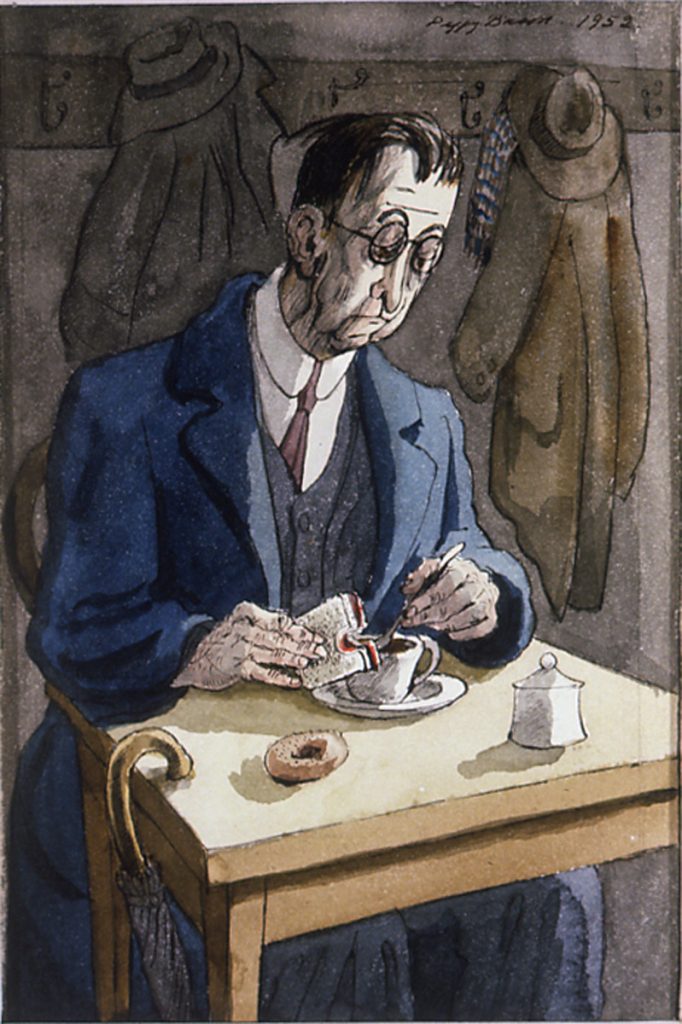
Peggy Bacon (American, 1895-1987) Lamentable Lunch, 1952, Gouache on paper, 7 . x 5 in. Gift of Anne M. Farr, 1997.7
This small work by American artist Peggy Bacon (1895-1987) has always intrigued me. The distinctive features of the man’s face, his sad, monotonous expression, and the ordinary setting invite me to imagine a narrative about who he is. I wonder what he did before he sat down to eat, and what happened after.
Born in Ridgefield, Connecticut, Bacon was a prolific caricaturist, painter, and illustrator, who often contributed to the New Yorker as well as to other widely circulated publications. Many of Bacon’s works are satirical and humorous; the distinctive facial features, exaggerated gestures and expressions convey the mood of the scene. In the 1920s and 30s she created a series of caricatures portraying stereotypical characters of the New York art world. In the following decades, Bacon continued creating images of ordinary people, like the man depicted in Lamentable Lunch.
In this work, a man sits alone at the table, stirring his coffee, eyes downcast while holding a sandwich on his right hand. The simplicity of the setting—a plain, unadorned table and the visible coat rack on the back wall—perhaps, a nearby cafeteria, reinforces the ordinary character of the sitter. His wrinkled hands and face emphasize his age, and his posture suggests his lack of enthusiasm.
Is this less than appetizing lunch the normal routine for this man? Is he alone by choice or would he rather have company? While looking at the work, I can’t help but think of Billy Collins’ poem Dining Alone, which reads in part:
I would rather eat at the bar,
but such behavior is regarded
by professionals as a form of denial,
so here I am seated alone
at a table with a white tablecloth
Attended by an elderly waiter with no name—
Ideal conditions for dining alone
According to the connoisseurs of this minor talent.
I have brought neither book nor newspaper
since reading material is considered cheating.
Eating alone, they say, means eating alone,
not in the company of Montaigne
or the ever-engaging Nancy Mitford.
Nor do I keep glancing up as if waiting
for someone who inevitably fails to appear—
a sign of moral weakness
to those who take this practice seriously.
Bacon’s work could be interpreted in a myriad of ways, where we may see a little bit of ourselves in this image.
Gisela Carbonell, Ph.D.
Curator
Read more about this work by Peggy Bacon on our Collection page.
This article was originally published in 2020.

